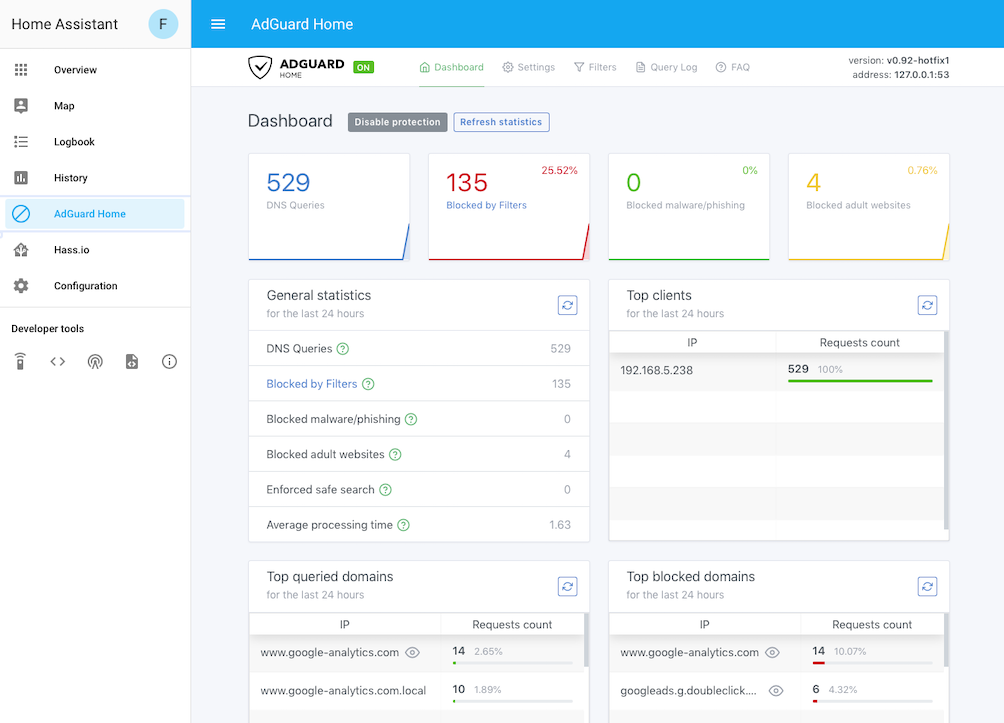


#ADGUARD SETUP INSTALL#
Then, run the following curl command to start the automated install script.
#ADGUARD SETUP UPDATE#
To use it, you first need to update your system by running the following commands: sudo apt update I decided to forget about Docker and just use the automated install script which is way easier.
#ADGUARD SETUP DRIVER#
I believe the issue was around the macvlan driver that you need to create as AgGuard Home is an application “which monitor network traffic and expect to be directly connected to the physical network” but I couldn’t find a solution.

When I tried to set up my clients, I couldn’t manage to make them talk with the Raspberry Pi. I managed to install it without any issues and run the admin dashboard but that was about it. I first tried the Docker option by using the official Docker image. Snap Store (a graphical desktop application for discovering, installing and managing applications on Linux).Docker (to have the entire application and its dependencies in one container that is easy to deploy and maintain).Automated install (by running one command in your terminal).To install Adguard Home on your Raspberry Pi, you have three options: After comparing the two, I decided to use AdGuard Home because of its stability, modern look and list of features. On the Raspberry Pi, Pi-Hole and AdGuard Home are the most popular ad-blocking projects. The answer was simple: blocking ads and trackers! If you had gifted me this 10 years ago, I would have built a Teamspeak or Mumble server so my friends and I could talk while playing Counter Strike : Source but today, in 2022, I wanted to build something that could have an impact on my daily life. Setting up the Raspberry Pi was super easy as the Raspbian OS was already pre-installed on the SD Card so the first real challenge was to find a project.
#ADGUARD SETUP SOFTWARE#
I remembered the new version of the Pi suffered from heat issues (that later got partially fixed by a software update) when it came out so I also ordered a fanless cooling case (the Armor Case Passive Cooling) along with the SD Card, power adapter, HDMI, and Ethernet cable. I’m not sure why I didn’t do it right away but ultimately I felt like it wasn’t the right time back then while we all had to deal with a lot of uncertainty. Method 2: SSH docker run -name adguardhome -v /srv/dev-disk-by-label-Files/config/AdGuard/workdir:/opt/adguardhome/work -v /srv/dev-disk-by-label-Files/config/AdGuard/confdir:/opt/adguardhome/conf -p 53:53/tcp -p 53:53/udp -p 67:67/udp -p 68:68/tcp -p 68:68/udp -p 853:853/tcp -p 3000:3000/tcp -d adguard/adguardhomeA few weeks ago, I decided to finally order the different cables I needed to use the Raspberry Pi 4 my partner gifted me right before the pandemic. Now you can point individual devices’ DNS to your server’s IP address and things should work from there. Complete the rest of the pages of installation by just filling in the blanks with basic information. Open a new browser tab and go to Make sure to change port 80 on the first page to whatever port you designated in your Stack. srv/dev-disk-by-label-Files/config/AdGuard1/confdir:/opt/adguardhome/confĬhange port 3000 to whatever port you’d like to use to access the admin interface.Ĭhange the volumes to match wherever you like to put your configuration files.Ĭlick “Deploy Container” and wait a minute for it to deploy. srv/dev-disk-by-label-Files/config/AdGuard1/workdir:/opt/adguardhome/work

80:80/tcp #change this to something like 81:80 if port 80 is already in use Then give the stack a name and copy this in:. The process is simple, so I’ll show you 2 ways to do this. AdGuard is the best way to get rid of annoying ads and online tracking and protect your computer from malware.


 0 kommentar(er)
0 kommentar(er)
